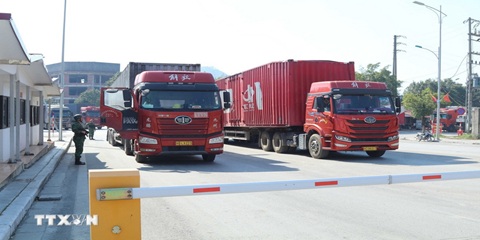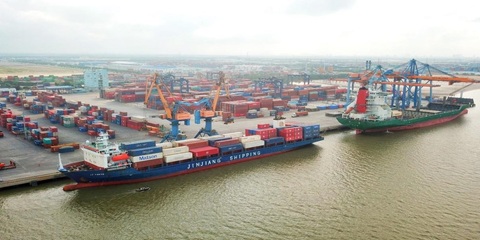Want to be in the loop?
subscribe to
our notification
Business News
WAGE DISPUTES OVERHEATED
Vietnam General Confederation of Labour, which represents workers, called a halt to the meeting. Earlier, on August 4, the Vietnam Chamber of Commerce and Industry (VCCI) requested an end to the meeting to express its uncompromising attitude to the proposed rise in minimum wage suggested by the worker representative. Each party already used its right to call a halt to the meeting according to the operating regulations of the National Wages Council.
Justification of wage
Currently, the recommended rise in minimum wages by VCCI and Vietnam General Confederation of Labour is by far different. Mr Mai Duc Chinh, Vice President of the Vietnam General Confederation of Labour, affirmed that the confederation would not change its proposed rise in minimum wage of 16.8 percent or more for 2016 from the rate in 2015. Meanwhile, VCCI, which represents employers, insisted on the proposed increase of 10 percent.
The Vietnam General Confederation of Labour defended that the current minimum wage can meet only 74 percent of minimum livelihood of a worker. The proposed rise above is based on minimum demand of worker and their families, socioeconomic conditions, salaries on labour market, and inflation compensations. Mr Chinh stressed that the rate proposed by the Vietnam General Confederation of Labour is reasonable to the roadmap that minimum wages must be enough for minimum livelihoods of workers and their families in 2017.
VCCI and the Association of Foreign Investment Enterprises in Vietnam (VAFIE) insisted on the addition of VND150,000-250,000 to minimum wages, depending on regions, which are tantamount to a 10-11 percent increase. This proposal takes the affordability of enterprises into account.
In the meantime, the economy is still in difficulty; global economies are unpredictably volatile; financial markets are being restructured; access to capital sources has not been widened for enterprises; and many companies are struggling to survive. The ‘wage’ shock may add burdens on enterprises which seem to be excessive. According to VCCI's statistics, big businesses account for less than 2 percent, medium enterprises make up for 2 percent; and small and micro businesses account for 96 percent. And, almost 70 percent of enterprises do not make a profit.
Currently, the costs employers pay for social insurance, medical insurance, unemployment insurance and union fee in Vietnam are the highest in the region. With the hike in minimum wages in 2015, insurance premiums and union dues increased 35 percent over 2014. The rise in minimum wages resulted in increased payments for these items. This was actually a heavy burden for businesses, especially SMEs. Ensuring rights for workers is a right policy, but it is more important to take the competitiveness and development of enterprises into consideration.
Wage rise is based on labour productivity growth
Whether the final rise is inclined to the proposed rate of 16.8 percent by the worker representative or to 10 percent as recommended by the employer representative or a rate of the National Wages Council that soothes both parties after two unsuccessful meetings, the story of minimum wages is still very complicated for following dialogues.
It is true that a vast majority of wage earners are leading a hard life or even live a poor life, but the wage must be viewed in a broader perspective based on the correlation with labour productivity and affordability of enterprises. In 2015 and beyond, Vietnam will have to face numerous challenges, including pressures from the entry to the ASEAN Economic Community (AEC), because it has to fulfil its international integration commitments. The "health" of enterprises remains limited, particularly SMEs.
In recent years, though the economy grew rapidly, it was driven by the exploitation of natural resources, cheap labour and pure investments. The shift of growth model to a new pattern based on intensive investment, innovation, scientific and technological application and labour productivity will require a lot of time and effort to be completed.
Another reason for holding back the wage rise is Vietnam’s labour productivity is the lowest in the region. According to data from the International Labour Organisation (ILO), Vietnam’s labour productivity in 2013 was among the lowest in the Asia - Pacific region, lower than Singapore, Japan and South Korea by 15 times, 11 times and 10 times, respectively. In ASEAN, Vietnam’s labour productivity was only equal to a fifth of Malaysia and two fifths of Thailand.
And, the most important factor to the proposed low rise is wages are regulated by the so-called market mechanism. Unemployment and underemployment often lead to supply-demand imbalance, causing wages to gain slowly or stay unchanged.
The salary and income rise for workers is still a hard nut to crack when it is placed in correlation with the above issues. In this regard, Mr Phillip Hazelton, Chief Advisor for ILO - Vietnam Labour Relations Project, said that the adjustment of minimum wages should be made regularly and based on both social and economic factors, e.g. the needs of workers and their families, the cost of living, the affordability of enterprises, labour productivity growth, and the correlation of minimum wage to average wage as well as employment desires.
ILO recommended that National Wages Council build a consensus between trade unions and employers via dialogues and conduct additional negotiation sessions for concerned parties to have enough time to reconsider proposals from counterparts.
Mr Pham Minh Huan, Chairman of the National Wages Council, said, the council will summon the third and last meeting on the minimum wage hike for 2016, slated for September 3, 2015. If this meeting ends without any agreement, the Chairman of the National Wages Council will propose a rate and submit to the Government for approval. The adopted rate will be applied from January 1, 2016.
Source: VCCI
Related News

VIETNAM’S SEAFOOD EXPORTS HIT OVER US$10 BILLION IN JAN-NOV
Seafood export revenue in November alone amounted to nearly US$990 million, up 6.6% year-on-year. Key product groups posted solid gains. Shrimp exports rose 11.7% to over US$385 million, supported by strong demand for whiteleg shrimp and lobster. Tra fish shipments increased 9.7% to almost US$197 million, while marine fish, squid, and mollusk exports maintained their recovery.

VIETNAM’S AGRO-FORESTRY-FISHERY EXPORTS HIT NEW RECORD IN JAN-NOV
Vietnam’s agro-forestry-fishery export revenue reached an estimated US$64.01 billion in the first 11 months of 2025, up 12.6% year-on-year and surpassing the full-year record of US$62.4 billion set in 2024. Agricultural exports reached US$34.24 billion, up 15% year-on-year, while livestock products brought in US$567.4 million, a 16.8% increase. Seafood exports rose 13.2% to US$10.38 billion, and forestry products earned US$16.61 billion, up 5.9%.

HANOI REPORTS RECORD-HIGH BUDGET REVENUE IN 2025
Hanoi’s budget revenue is estimated to reach VND641.7 trillion in 2025, the highest level ever recorded and nearly 25% above the revised target, according to a report by the municipal government. Data from the city’s socioeconomic performance review shows that total state budget collections in 2025 are projected to reach 124.9% of the adjusted plan and rise 24.9% from 2024, the Vietnam News Agency reported.

VIETNAM, CHINA TO PILOT TWO-WAY CARGO TRANSPORT AT LANG SON BORDER
Vietnam and China will launch a one-year pilot program on December 10 to allow two-way cargo transport through the Huu Nghi–Youyi Guan international border gates in Lang Son Province, reported the Vietnam News Agency. The Dong Dang-Lang Son Economic Zone Management Board said the trial aims to reduce transport costs and improve customs clearance capacity.

VIETNAM’S IMPORT-EXPORT VALUE NEARS US$840 BILLION IN JAN-NOV
The total value of Vietnam’s imports and exports was nearly US$840 billion between January and November this year, the highest level ever recorded, according to the National Statistics Office. In its latest report on the country’s socio-economic performance, the National Statistics Office highlighted a series of positive economic indicators, with trade emerging as one of the strongest drivers of growth.

OVER 19 MILLION INTERNATIONAL VISITORS COME TO VIETNAM IN JAN-NOV
Vietnam received more than 19.1 million international visitors in the first 11 months of 2025, a 20.9% increase year-on-year and the highest level ever recorded, according to the National Statistics Office. The figure surpasses the full-year record of 18 million arrivals set in 2019, before the Covid-19 pandemic. Nearly two million foreign visitors arrived in November alone, up 14.2% from October and 15.6% from the same period last year.
























